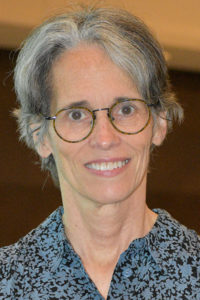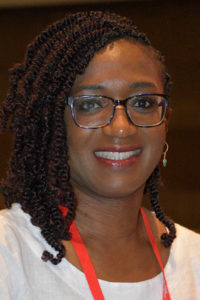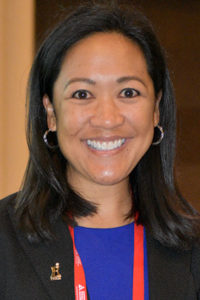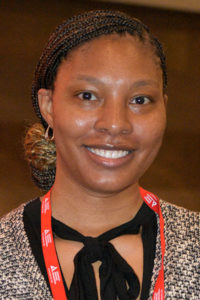
Access to diabetes technologies, as well as the education and support necessary to successfully use them, remains a challenge for patients in under-resourced communities. A multidisciplinary panel discussed the barriers to diabetes technology use and potential solutions to overcome them during the Scientific Sessions symposium Technology Education in Underserved Populations—Education Factors.
The session, which was originally presented on Sunday, June 5, was livestreamed and can be viewed on-demand by registered meeting participants at ADA2022.org. If you haven’t registered for the 82nd Scientific Sessions, register today to access the valuable meeting content.
“Diabetes technology has been advancing and we have these wonderful tools now that can help improve outcomes and have changed the world for many people with diabetes,” said Anne L. Peters, MD, Director of Diabetes Programs and Associate Professor of Medicine at the University of Southern California Keck School of Medicine. “However, many under-resourced patients lack access to it, and even with technology we are not able to get the majority of people to an A1C of less than 7% or eliminate episodes of severe hypoglycemia.”

Dr. Peters opened the session with an overview of the challenges and the disparities that underserved populations face in accessing and using diabetes technology.
“COVID has magnified health care disparities and the risks associated with poorly controlled diabetes. We have to do better for those who have less,” she said. “We must work hard to provide culturally sensitive, comprehensive diabetes care that incorporates resources to deal with mental health issues and address the social determinants of health.”
Because there are many layers to the barriers limiting technology access and education—some logistical, some systemic—there is no “one-size-fits-all” program or approach to overcome them, said Vivian N. Ayuk, PharmD, CDCES, Chief Executive Officer of Sorogi Health, who discussed the importance of tailoring community-based diabetes education and support services to the populations and communities they serve.

“What works in one community may not work in another, so we need to continue to develop community-based programs and educational materials that reflect the people we want to help,” Dr. Ayuk said. “More research is needed to create more effective tools for underserved populations, and continuing education and support are critical for long-term success. Regardless of their socioeconomic status, everyone deserves access to the right technology at the right time, especially in a chronic condition like diabetes.”
Jasmine D. Gonzalvo, PharmD, CDCES, BC-ADM, Director of the Purdue University Center for Health Equity and Innovation, discussed the important role that diabetes care and education specialists can play in improving diabetes technology education for people in under-resourced communities.
“The ADA Standards of Care promote the use of a variety of diabetes technology hardware, devices, and software. However, access to diabetes technology is really limited in groups that are historically marginalized,” Dr. Gonzalvo said. “There are innumerable barriers to overcome to improve outcomes for these populations.”

Many of the barriers are modifiable, Dr. Gonzalvo said, and diabetes care and education specialists are uniquely positioned to identify them and provide the necessary education, support, and guidance to overcome them.
“There are many layers to successfully accessing and sustaining continued use of technology,” she said. “Diabetes care and education specialists can lead, facilitate, and implement deliberate efforts to mitigate health disparities on multiple levels, and can help people with diabetes navigate through those layers.”
Robin Littlejohn, MS, Research Scientist and Senior Human Factors Specialist at the MedStar Institute for Human Factors, concluded the session with a discussion about the importance of matching the goals of digital health technology use to the needs of users in historically marginalized and under-resourced populations.
“We have to design and implement digital health technologies that encourage continued engagement and, at the same time, ensure that the technology does not further worsen existing health and health care disparities,” Littlejohn said. “The technology must be focused on accessibility, usability, and inclusivity. We have to be able to anticipate user needs and, importantly, meet users where they are at.”
[sub-post-content]